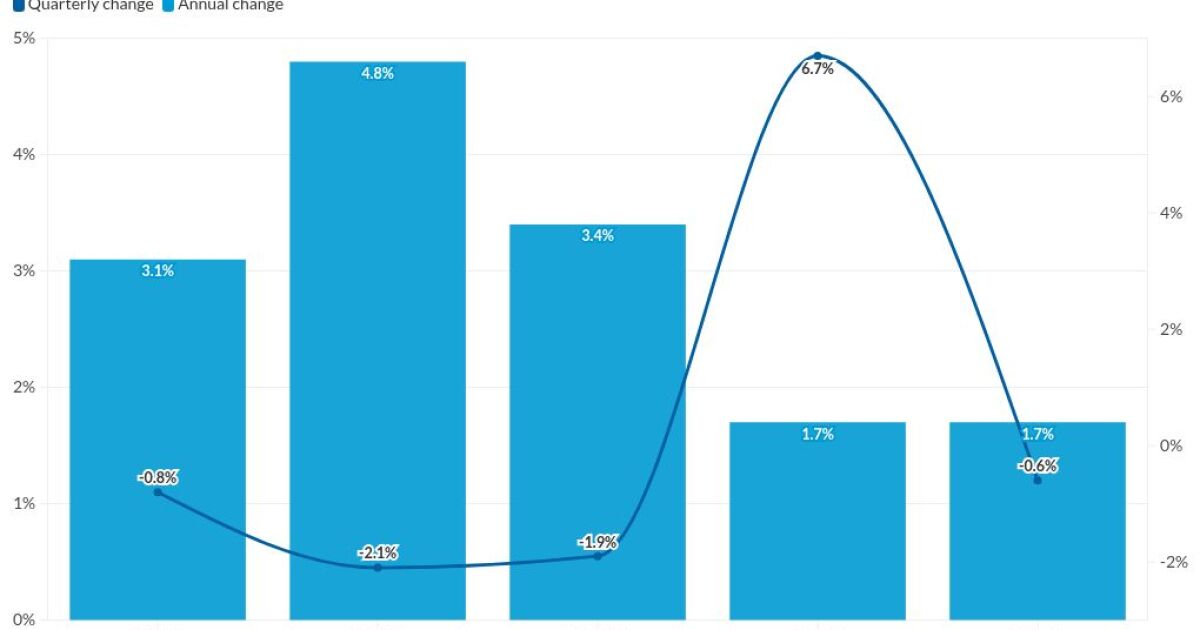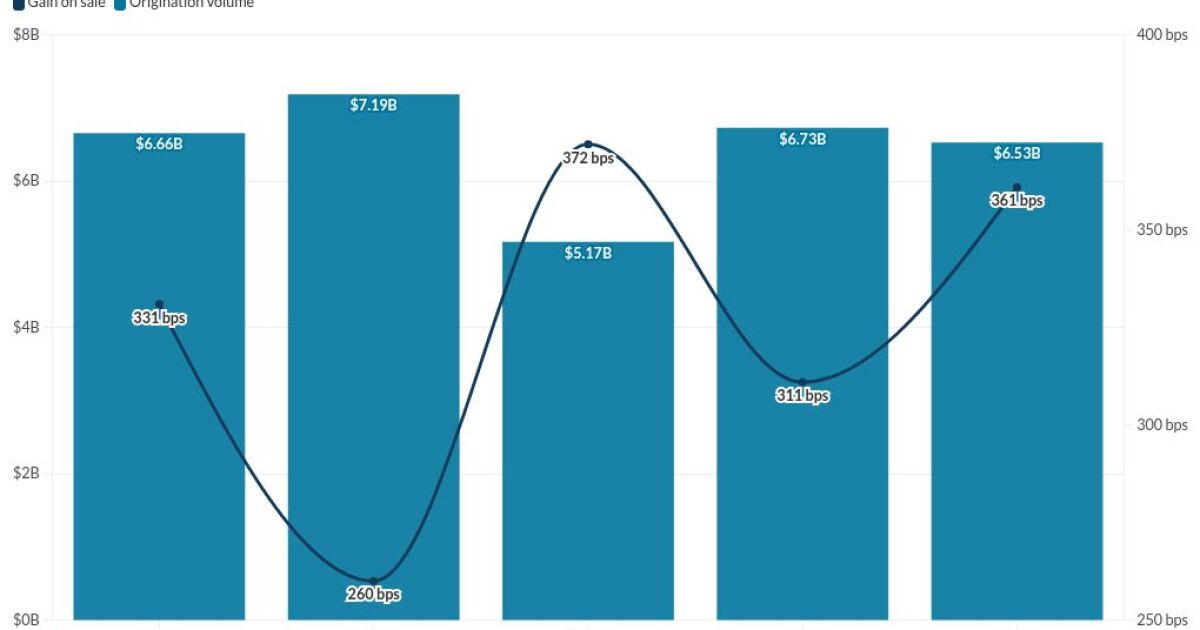
Mortgage volumes declined for the fourth week in a row, according to the Mortgage Bankers Association.
The MBA’s Market Composite Index, a measure of loan activity based on surveys of association members, fell a seasonally adjusted 6.3% for the weekly period ending April 1 and was 43% lower than its level in the same seven-day period last year.
Interest rates, which are now at highs not seen in years, have played a leading role in the slowdown, particularly for refinance activity, the MBA said. The Refinance Index plunged by 10% on a week-over-week basis and currently sits 62% lower from where it was one year ago.
“As higher rates reduce the incentive to refinance, application volume dropped to its lowest level since the spring of 2019,” said Joel Kan, MBA’s associate vice president of economic and industry forecasting, in a press release. He also noted that the refinance share of new applications relative to total originations dipped to 38.8%. One week ago, refinances took a 40.6% share of weekly volume, and in the same week of 2021, accounted for close to 51% of activity. As recently as late February, refinances still made up over half of all loan applications, but the percentage has dropped for six straight weeks.
After inching up the previous week, the Purchase Index also took a step back, falling 3% on a seasonally adjusted basis. Compared to the same time frame in 2021, seasonally adjusted purchase volumes were 9% lower.
But the drop in purchase volumes could not solely be chalked up to spiking interest rates nor a lack of potential buyers, Kan said. While applications decreased, buyer interest remained consistent throughout much of the first quarter.
“Insufficient for-sale inventory is restraining purchase activity. Additionally, the elevated average purchase loan size, and steeper 8% drop in FHA purchase applications, are both indicative of first-time buyers being disproportionately impacted by supply and affordability challenges,” he added.
The average size of purchase-loan applications set several weekly survey records to start 2022, but dropped by a fraction last week compared to the prior seven-day reporting period, falling to $452,600 from $452,900. The mean refinance amounts saw a larger decline, tumbling 1.2% to $289,300 from $292,900. But with a much higher percentage of purchase applications compared to refinances, the average size of all new activity came in higher on a weekly basis, edging up 0.3% to $389,200 from $387,900.
With the recent dramatic rise in rates, the share of adjustable-rate mortgage applications has also increased over the past month, and last week accounted for 6.8% of total volume, up from 6.6% seven days earlier.
The seasonally adjusted Government Index dropped by almost 6% compared to the previous week, with the declining volume of Federal Housing Administration loans helping drive that agency’s share of volume down to 9.2%, compared to 9.3% a week earlier. Meanwhile, loans sponsored by the Department of Veterans Affairs took in 9.8% of activity, up from 9.5%. U.S. Department of Agriculture-backed loans accounted for the same share week over week at 0.5%.
After accelerating to highs not seen in years one week ago, interest rates among MBA members continued their upward trajectory. All mortgage-rate categories tracked by the association increased by at least 10 basis points.
The contract rate for 30-year fixed mortgages with conforming balances of $647,200 or less averaged 4.9%, rising from 4.8% a week earlier.
The average contract interest rate of 30-year jumbo loans with balances exceeding the conforming limit jumped to 4.51%, 11 basis points higher from 4.4% seven days earlier.
The contract rate of 30-year fixed FHA-backed mortgages also averaged 4.9%, up by 24 basis points from 4.66% the prior week.
After crossing the 4% threshold last week, the average 15-year contract fixed rate climbed another 10 basis points to 4.11% from 4.01%.
The 5/1 adjustable-rate mortgage average came in at 3.82% for the weekly period, up from 3.7% seven days earlier.



